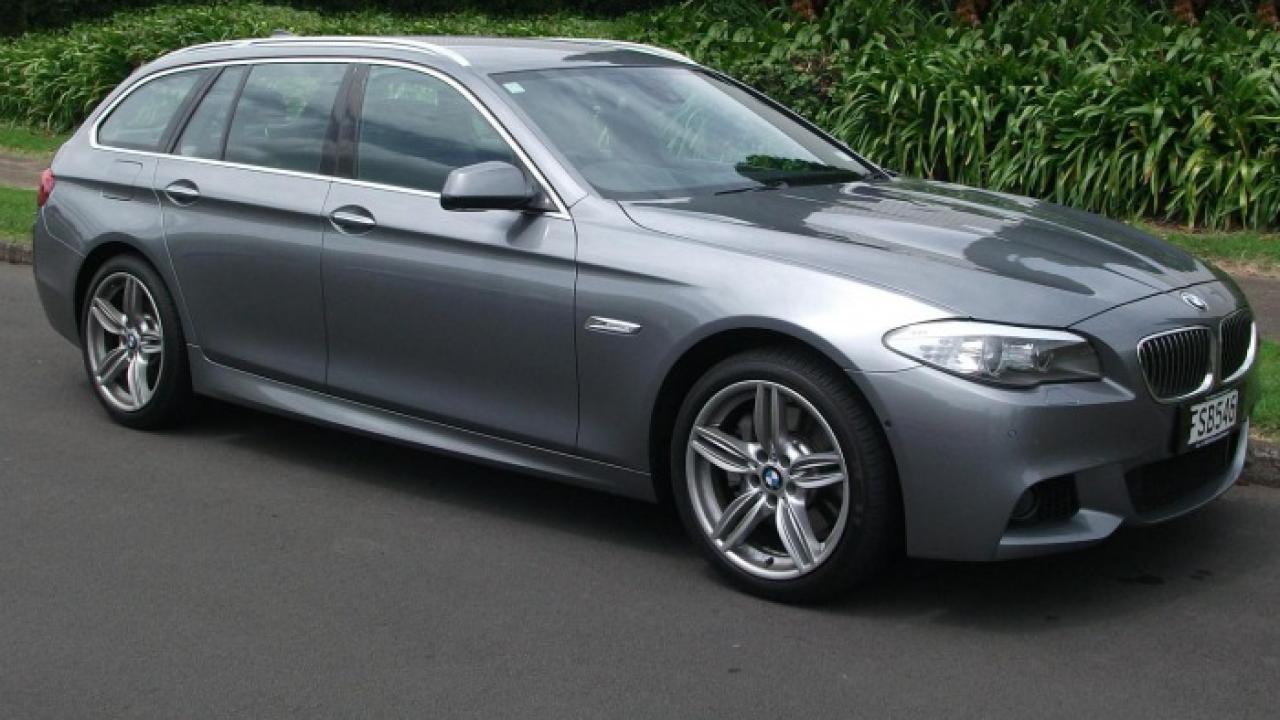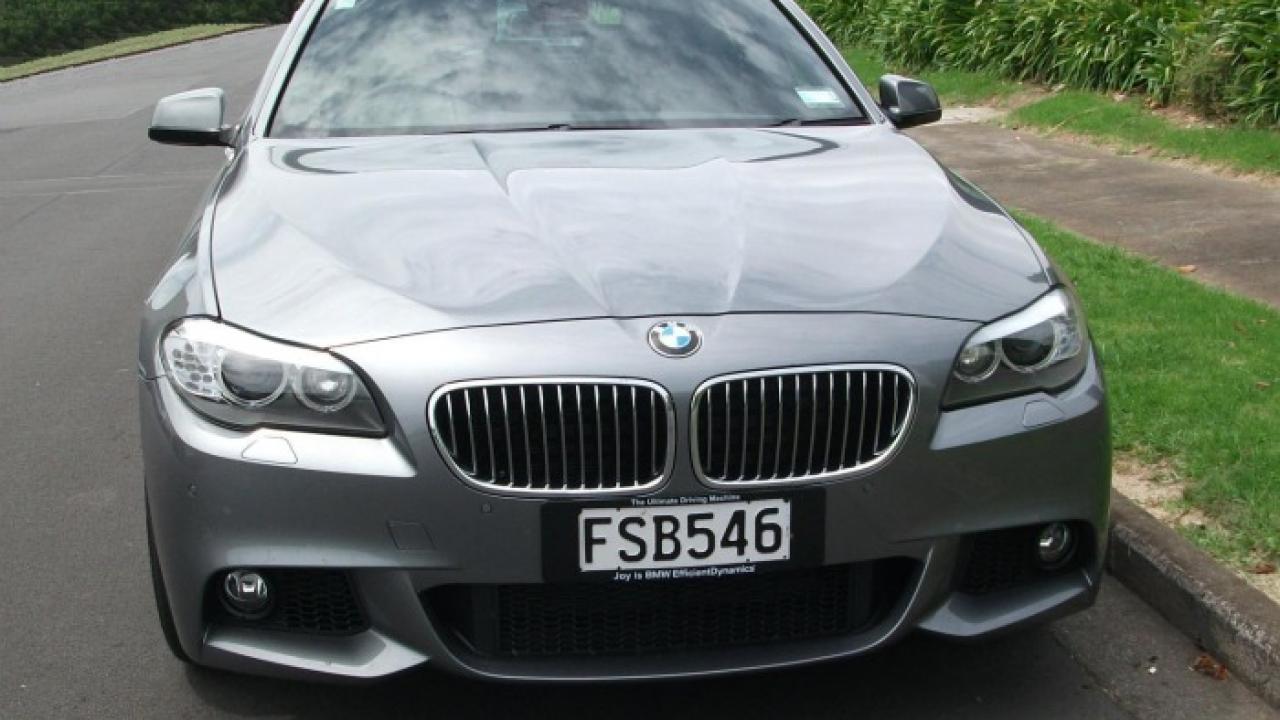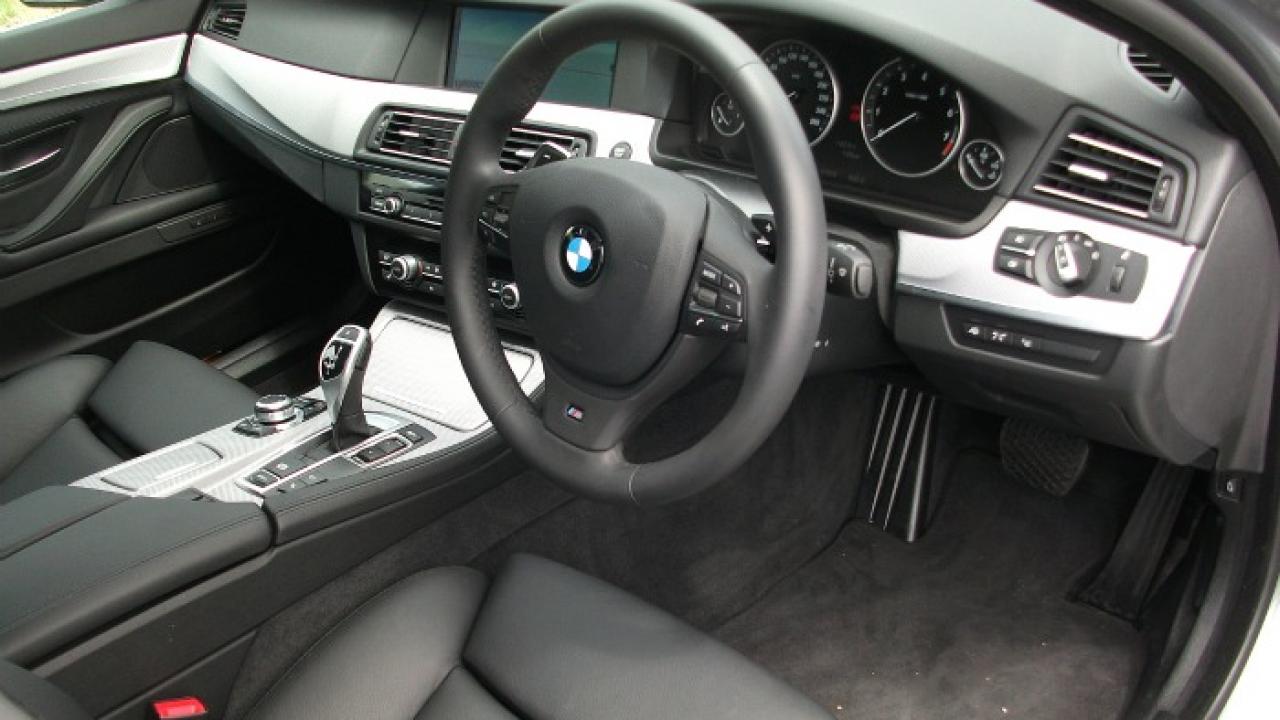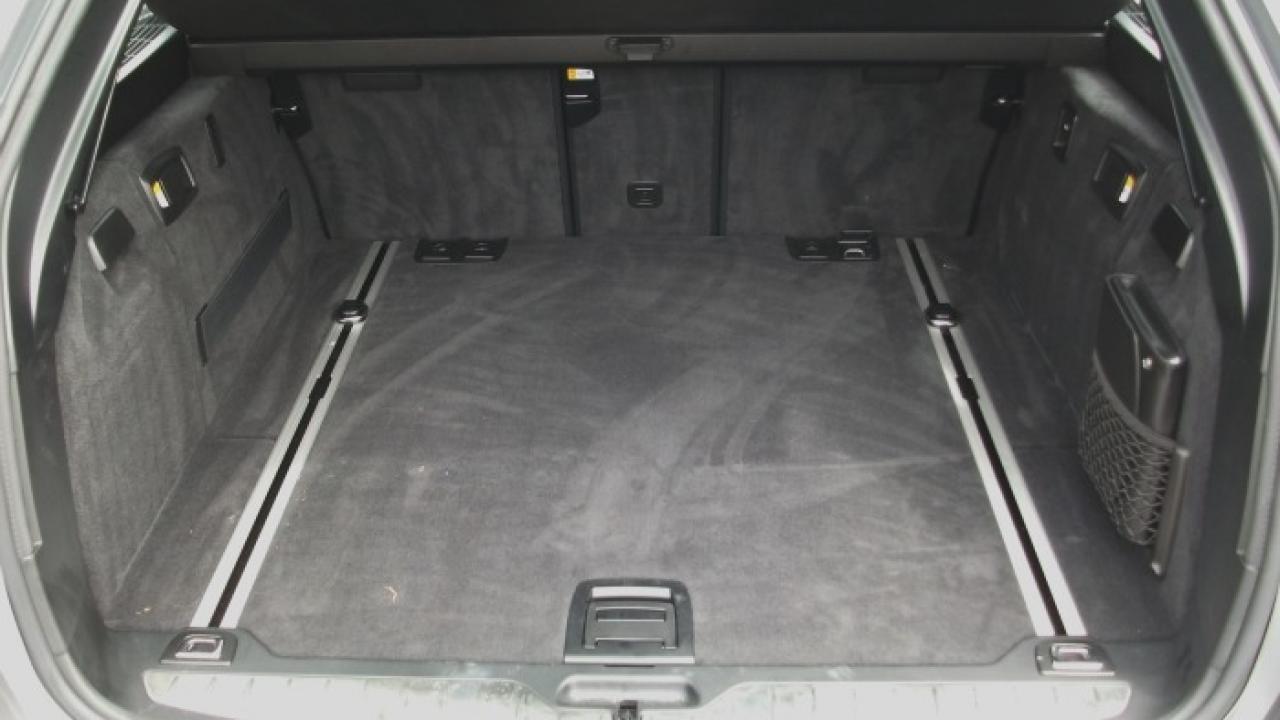New car report; Bunch of fives deliver punch
We tested BMW’s latest 5 Series in V8 petrol form last year and were impressed. Not only did it offer outstanding performance, handling, comfort and all round driving enjoyment, we felt that it shone against its rivals in a manner we hadn’t seen from the 5 Series since the E39 5 Series did a couple of generations back, when compared against that model’s contemporaries of the day.
Around a year into its life cycle, and the Bavarians have been busying themselves getting the rest of the 5 Series range from the drawing board to the streets, so when the chance came along for us to test some further models in the range we looked forward to the opportunity.
First to grace our carpark was the 535i Touring Motorsport. As anyone who knows their BMW’s will be aware, Touring is Bavarian for what lesser brands might call a Station Wagon, and as has been BMW’s tradition with their Touring models, the new Five is beautifully finished and well appointed, adding practicality to the mix.
Contrary to what BMW aficionados might think, the 535i is not 3.5 litres as would have been the case in the old days when the first digit designated the series model and the second and third digits told you the engine size.
These days, the first digit remains true to the original format while the other digits stretch the boundaries up or down a little.
In this instance the appearance of what seems to be an additional half a litre capacity in the model designation is due to the 3.0 litre powerplant’s twin charging arrangement. BMW people tell us that Twin charging refers to two force-feed methods, so could mean it has one twin scroll single turbo-charger or two turbo chargers. In the case of the 535i it’s a twin scroll single unit.
Thanks to the double-effect blower, the eight speed automatic 535i manages 225kW/400Nm from the 3.0 litre straight six, propelling the 1,845kg Touring to 100km/h in a very respectable 6.1 seconds and with the EfficientDynamics wizardry, consumes fuel at the rate of 8.5L/100km while emitting 197g/km of CO2.
BMW’s EfficientDynamics package offers a number of fuel saving features depending on model
Some of BMW’s green features include shutting down the air-con pump when not required, air vent control on diesel models which closes off airflow through the grille, allowing the engine to reach operating temperature quicker and reducing drag.
There’s also an electric water pump and power steering pump which operate only when required and a brake regeneration system which BMW’s technical gurus refer to as Intelligent Alternator Control, which probably better describes the system’s true purpose.
We generally associate brake regeneration with hybrid cars but in this case it involves some sleight of hand with the charging system which shuts the alternator down when accelerating, running on power supplied directly from the battery. But when decelerating or on over-run, the alternator pumps maximum charge back into the battery. Of course, it depends on the battery’s state of charge, so will still pump juice into a battery that’s less than fully charged, regardless of throttle position.
Standard equipment includes comfort access and keyless start, self-dipping Xenon headlights, rear view camera, a lane deviation warning system, Head-up display and a variety of hi-tech goodies including Bluetooth, ambient interior lighting and Dynamic Drive.
We're used to high-ticket options on German cars. The 535 is no exception
Our 535i Touring test car was optioned with almost $35,500 worth of extras – which is not an insignificant sum, taking the standard car from $151,500 to twenty dollars short of $187,000. It also had one of the no-cost optional interior trim finishes which comes standard with the Motorsport package, in this case an aluminium finish which wasn’t really to our liking, but just like paint colour that’s personal preference, however we’d have preferred to stay with the standard high gloss black trim.
The Motorsport package adds $8,350, Adaptive drive $7,620, Active steering $3,070, Comfort front seats $3,080, soft close doors $1,640, Navigation system Professional, $2,050 and numerous slightly lesser value items making up the difference.
One such feature being the $210 Internet interface, which operates in conjunction with your phone, using the iDrive controller to surf the net and display web pages on the giant centrally mounted screen.
The 535d sedan which we drove next has a base price of $148,500, or $164,470 as tested with Motorsport package et al. The 3.0 litre diesel (same logic applies re engine designation and turbo-charging) puts out fifty percent more torque than the petrol equivalent at 600Nm, while power is 5kW short, at 220kW.
But it’s the torque that counts, and the oil burner is significantly quicker off the line, beating the petrol powered Touring to 100km by 0.4 of a second, getting there in 5.7 seconds. Combined diesel consumption is 6.1L/100km and emissions are 162g/km.
It’d be a closely fought thing as to whether we’d pick the diesel or petrol 535, but that extra punch off the line and less visits to the gas station would probably dictate that we’d plump for the d over the i.
Driving dynamics are impressive across the whole of the range, and in experiencing a cross section of five series models, we still come to the same conclusion that BMW has redefined the benchmark in this sector.





